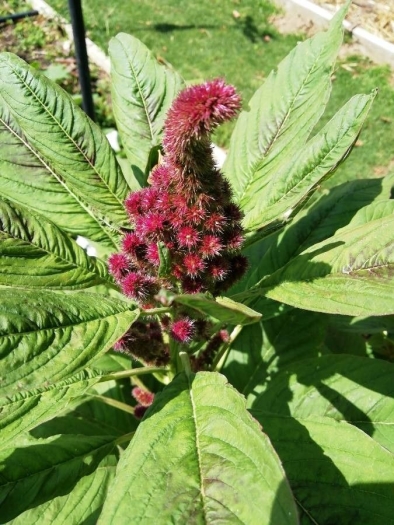Prince-Of-Wales Feather
(Amaranthus hypochondriacus)
Prince-Of-Wales Feather (Amaranthus hypochondriacus)
/
/

Tifenn Gindre
CC BY-SA 4.0














































Estimated Native Range
Summary
Prince-Of-Wales Feather is valued for its ornamental flowers and its nutritious leaves and seeds, which are a source of protein and essential amino acids. It is often used in ornamental gardens for its vibrant foliage and flowers, and can also be grown for its edible parts. The plant is suitable for a range of uses, including border planting and as a grain crop. It prefers well-drained soils and full sun exposure, and can tolerate a range of soil types. It is suitable for USDA hardiness zones 3–10. Cultivars such as ’Green Thumb’ and ’Pygmy Torch’ have been awarded the Royal Horticultural Society’s Award of Garden Merit. While generally easy to maintain, the plant may attract aphids and require pest management. It is important to note that Amaranthus hypochondriacus should be monitored for self-seeding, as it can become weedy in some conditions.CC BY-SA 4.0
Plant Description
- Plant Type: Herb
- Height: 1-3 feet
- Width: 1-3 feet
- Growth Rate: Moderate
- Flower Color: Red, Purple
- Flowering Season: Summer, Fall
- Leaf Retention:
Growth Requirements
- Sun: Full Sun
- Water: Medium
- Drainage: Slow, Medium, Fast
Common Uses
Bee Garden, Bird Garden, Border Plant, Butterfly Garden, Drought Tolerant, Edible*Disclaimer: Easyscape's listed plant edibility is for informational use. Always verify the safety and proper identification of any plant before consumption., Hummingbird Garden, Low Maintenance, Showy Flowers
Natural Habitat
Native to Mexico and cultivated fields
Other Names
Common Names: Prince’s-Feather, Prince’s-Feather Amaranth, Prince Of Wales-Feather, Prince-Of-Wales-Feather, Trauer-Fuchsschwanz, Amarante Hypocondriaque, Toppamarant, Grain Amaranth, Prince’s Feather, Grünähriger Fuchsschwanz
Scientific Names: , Amaranthus hypochondriacus, Amaranthus hybridus subsp. hypochondriacus, Amaranthus hybridus f. hypochondriacus, Amaranthus monstrosus, Amaranthus atrosanguineus, Amaranthus hybridus var. hypochondriacus, Amaranthus hypochondriacus var. hypochondriacus, Amaranthus hypochondriacus var. macrostachys, Amaranthus hypochondriacus var. monstrosus
GBIF Accepted Name: Amaranthus hypochondriacus L.